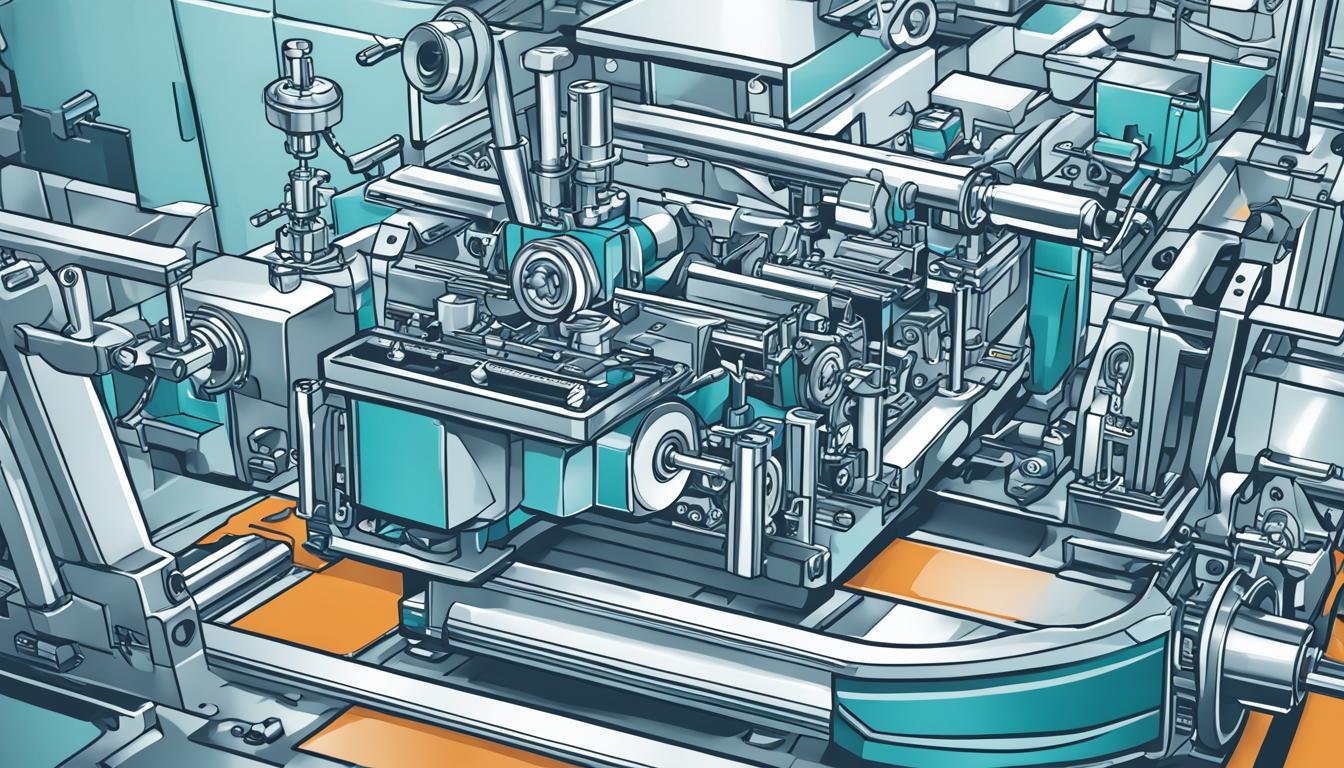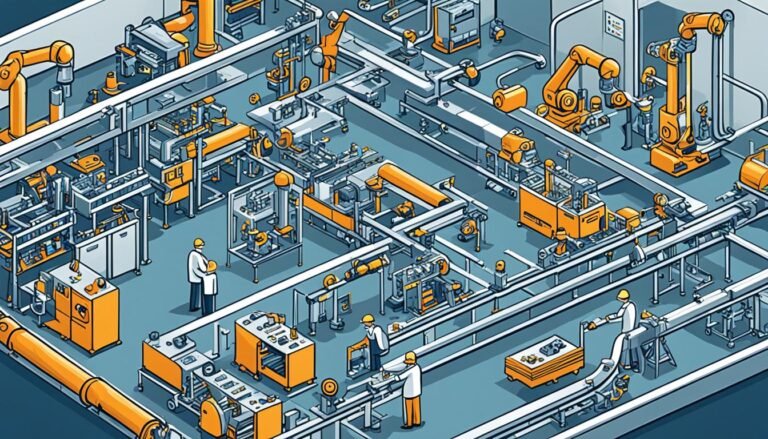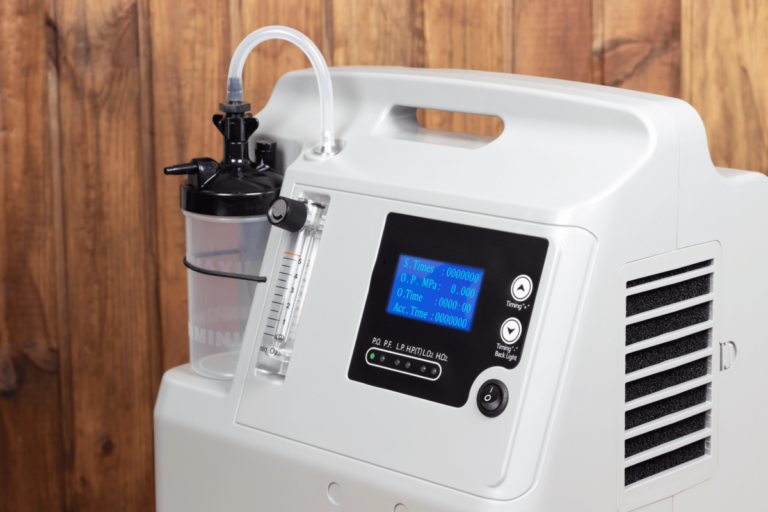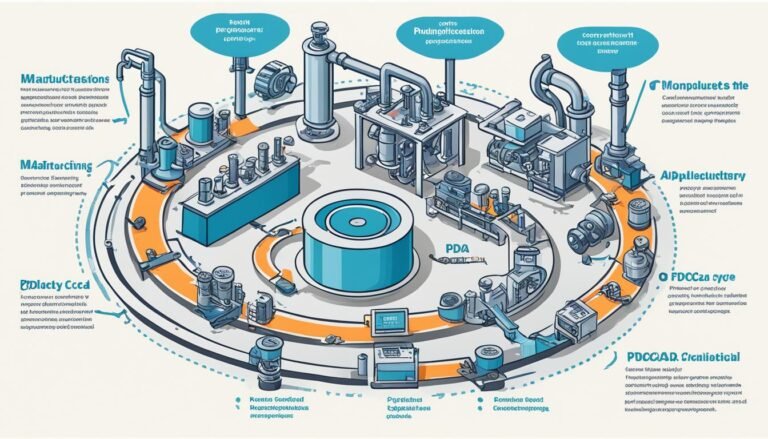Standard Manufacturing: Precision in Production
Did you know that over 60% of manufacturers see better product quality and faster production with precision manufacturing? This shows how key precision manufacturing is in today’s production.
In standard manufacturing, precision is key. Technologies like CNC machining and laser cutting change the game. They bring unmatched accuracy and stick to design specs closely. Automation and precise planning cut down on waste and speed up making things. This leads to top-notch quality and consistency in making parts.
Key Takeaways
- Precision manufacturing boosts product quality and cuts down production time.
- CNC machining and laser cutting bring top accuracy and stick to designs well.
- Automation is key for reducing waste and speeding up production.
- Advanced tech ensures consistent quality and top results in making parts.
- Manufacturers gain from cost savings, quicker production, and better quality with precision manufacturing.
Introduction to Precision Manufacturing
Precision manufacturing is key in today’s production. It uses special machines and expert methods for high quality and tight tolerances. Computer-aided manufacturing (CAM) is crucial, using software to guide machines with great accuracy. This ensures parts are made consistently and with few mistakes, vital in today’s competitive world.
Lean manufacturing is also vital in precision manufacturing. It focuses on cutting waste and using resources wisely, making production efficient. This cuts down on labor costs and supports sustainable practices, helping the economy and the environment.
“Precision powers innovation and sets benchmarks for excellence within industries.”
Industrial engineering supports these methods by improving the design and setup of systems. It makes sure the manufacturing process runs smoothly, cutting down on downtime and boosting output.
Precision engineering and machining work together for reliable results. This teamwork is key for achieving the accuracy needed in fields like aerospace, automotive, and medical devices.
| Core Aspect | Benefit | Examples |
|---|---|---|
| Computer-Aided Manufacturing | High Precision | Automotive parts |
| Lean Manufacturing | Waste Reduction | Electronics production |
| Industrial Engineering | Efficiency Improvements | Assembly lines |
By combining CAM, lean principles, and industrial engineering, precision manufacturing often goes beyond industry standards. This approach ensures manufacturers can make high-quality products efficiently and consistently.
Advanced Technologies in Precision Manufacturing
Advanced technologies are key in precision manufacturing. They make the industry work better and produce higher quality products. By using these technologies, making things more efficiently and with better quality has become easier.
CNC Machining
CNC machines are leading the way in precision manufacturing. They make parts with near-perfect repeatability and tight tolerances. This makes them essential for industries needing high precision.
Adding manufacturing execution systems to CNC machines makes them work better. This means more work gets done and less time is wasted.
Laser Cutting
Laser technology adds a new level to precision manufacturing. Laser cutting is great for doing detailed work with a high-quality finish. It’s perfect for tasks needing precise cuts and less waste.
The precision of laser technology works well with manufacturing execution systems. This results in outstanding products.
Automation and Robotics
Industrial automation and robotics have changed production lines a lot. They bring speed and consistency to making things. Robots reduce mistakes and help make more products easily.
With robots and manufacturing execution systems, controlling and watching over production is easier.
These technologies—CNC machines, laser technology, and industrial automation—are the core of modern precision manufacturing. They set new standards for doing things better, more precisely, and with higher quality.
Benefits of Precision Manufacturing
Precision manufacturing brings big benefits to making things. It makes sure things are made with high accuracy and speed. This is why it’s so popular in today’s industries.
Speeds Up Production and Reduces Costs
Using precision manufacturing makes things faster and cheaper. It cuts down on mistakes and shortens the time it takes to make things. This means less work and less time wasted.
Enhances Quality Control
Precision manufacturing helps make things better by keeping quality high. Every part is made just right, meeting or beating quality standards.
Minimizes Waste
By using precision methods, making things becomes more efficient. It uses less material and is better for the planet. This helps companies meet their goals for being more sustainable.
Standard Manufacturing
Standard manufacturing is the base of precision manufacturing. It uses lean manufacturing to make processes better, remove waste, and improve quality. This approach helps make the supply chain better, leading to more productivity and excellence.
Lean manufacturing focuses on continuous improvement, or Kaizen. This helps companies make their operations better all the time. By working on the supply chain, companies can make things faster, keep less inventory, and improve their relationships with suppliers. This makes manufacturing more strong and quick to respond.
Technology is key in making standard manufacturing better. By using new tech like ERP systems and real-time data, companies can work more efficiently. This helps them keep up with quality and stay competitive.
Here’s a look at how traditional and lean manufacturing compare.
| Traditional Manufacturing | Lean Manufacturing |
|---|---|
| Focus on mass production | Focus on eliminating waste |
| Higher inventory levels | Just-in-time inventory management |
| Longer lead times | Shorter lead times |
| Fixed workflows | Flexible and adaptive workflows |
The Role of Quality Control in Precision Manufacturing
Quality control is key in precision manufacturing. It makes sure every product is top-notch. By closely watching the production process, manufacturers keep things precise and consistent.
Ensuring Dimensional Accuracy
Getting things just right in size is very important. With tools like Coordinate Measuring Machines (CMM), makers check tiny details. This careful checking makes sure every part fits the exact specs, boosting quality control.
Maintaining Consistency Across Production Runs
Keeping production runs the same is vital for quality control. By sticking to strict size limits, makers make sure every part is the same. This is key in areas where being reliable and precise matters a lot, showing how important good quality control is.
Applications of Precision Manufacturing in Various Industries
Precision manufacturing is changing many industries by raising production and quality standards. This change is seen most in areas needing high precision, like aerospace, automotive, and medical devices.
Aerospace
The aerospace industry needs precision manufacturing for top-quality parts that can handle tough conditions. With CNC machining and micro-fabrication, parts are made with great accuracy. This ensures they last long and work well.
Automotive
In the car industry, precision manufacturing is key for safety and efficiency. Parts like engine components and safety features are made with care. This makes cars safer and run better.
Medical Devices
For making medical devices, precision is a must. Tools and implants must be safe for the body and meet high standards. Precision manufacturing helps make complex devices that are safe and work well for patients.
| Industry | Key Focus | Precision Manufacturing Techniques |
|---|---|---|
| Aerospace | Durability, Resistance to Extreme Conditions | CNC Machining, Micro-Fabrication |
| Automotive | Safety, Performance | High-Precision Machining, Robotics |
| Medical Devices | Biocompatibility, Manufacturing Standards | Micro-Machining, Advanced Materials Processing |
Challenges and Solutions in Precision Manufacturing
Precision manufacturing faces many challenges. Working with materials like superalloys requires advanced machining and technology.
Manufacturers use advanced technologies like 5-axis CNC machining. These methods allow for precise cuts in tough materials. Challenges include wear on machines and keeping tight tolerances.
Protective finishes and coatings help fight wear and extend equipment life. They keep critical parts working well for longer, cutting down on downtime and costs.
Digital technologies like digital twins have changed how we solve problems. Digital twins mimic real assets, helping predict and solve issues before they start. This leads to better production processes.
Despite challenges, precision manufacturing keeps evolving and finding new solutions. These advances show the industry’s strength and drive for excellence. They mark a new era of efficiency and precision in manufacturing.
| Challenges | Solutions |
|---|---|
| Working with Superalloys | 5-axis CNC machining |
| Wear and Tear on Machinery | Protective finishes and coatings |
| Maintaining Tight Tolerances | Advanced manufacturing technologies |
| Production Line Issues | Digital twins for simulation |
Conclusion
As we wrap up our look at precision manufacturing, it’s clear this field is where innovation meets technology and expertise. It’s changed how we make parts by making them super accurate. This has raised the bar for quality and performance, and made making things faster.
Precision manufacturing is key to making things in a way that’s good for the planet. It uses advanced tech like CNC machining and laser cutting to cut down on waste and save money. These new ways of making things are crucial for meeting the high demands for accuracy in fields like aerospace, cars, and medical devices.
The future of precision manufacturing is set to keep changing, thanks to new tech. It’s a field that’s always bringing us new discoveries and changing how different industries work. In the end, precision manufacturing is not just a way to stay ahead. It’s the base for new discoveries and ways to make things better for the planet.







